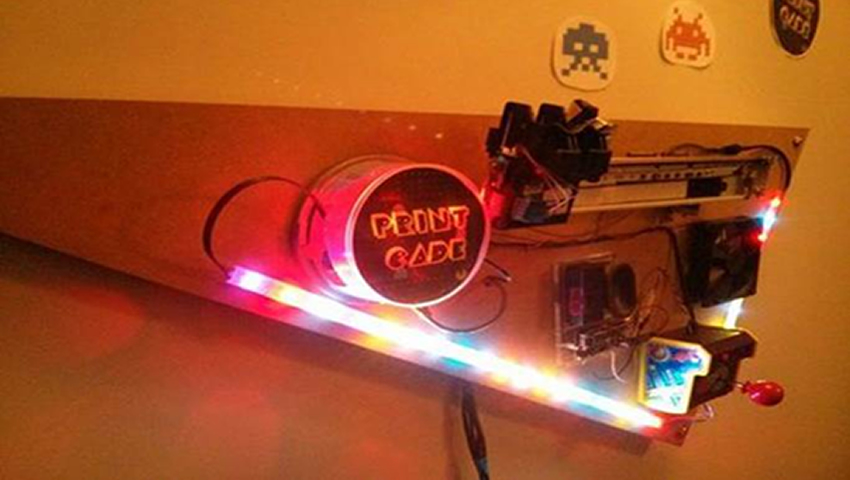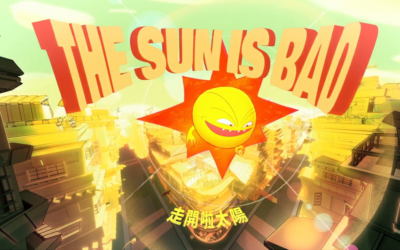Image Credit: “PrintCade”, 2014, Jonah Brucker-Cohen, Michael Ang
This Q&A is part of a series of interviews with some of the creative minds behind SIGGRAPH 2016. Meet Jonah Brucker-Cohen, Ph.D., SIGGRAPH 2016 Art Gallery Chair. Brucker-Cohen is an award winning artist, researcher, and writer. He received his Ph.D. in the Disruptive Design Team of the Networking and Telecommunications Research Group (NTRG), Trinity College Dublin.
SIGGRAPH 2016 (S2016): How does the theme of SIGGRAPH 2016, “Render the Possibilities,” speak to the Art Gallery?
Jonah Brucker-Cohen (JBC): 2016’s Art Gallery is titled “Data Materialities” and is about accenting the large amounts of data that we consume and create daily through our mobile devices, computers, and connected devices. We are surrounded by networks, information, and data. From public to private profiles, wired to wireless networks, and social and mediated realities. Whether these signals consist of radio frequency or physical, wired connections, networks are always around us, consuming and permeating our offices, homes, schools, and public indoor and outdoor spaces. They consist in incarnations such as social networks, transportation and sustenance networks, electricity, data, water, and more.
“Render The Possibilities” relates to the theme of the gallery by thinking beyond the typical output methods for data acquisition and retrieval. The possibilities for interacting with digital information goes beyond the screen, and beyond mere tangible interfaces. Information can be rendered in inviting ways that emphasize its significance and location both online and offline. This translation between the two worlds is constantly changing and being reevaluated
S2016: Where does your core inspiration come from?
JBC: My core inspiration comes from my interest in networks and their pervasiveness in today’s world. Combined with databases and continual flows of information being generated by people through their mobile devices and handheld sensors, this theme of endless information is pervasive in our lives whether we like it or not. I am also interested in real-time experiences and data that is generated by physical or online interaction. So these themes come into play for next year’s Art Gallery.
S2016: In one sentence, describe your program vision.
JBC: “Data Materialities” exposes the data in our everyday lives and turns it into playful, unexpected, and critical forms of interaction and experience.
S2016: Why will the Art Gallery be a “must see” at SIGGRAPH 2016?
JBC: The Art Gallery for SIGGRAPH 2016 intends to bring large-scale, immersive physical displays to the conference. As computer graphics change daily and become more powerful and closer to “real world” renderings, it becomes more difficult to discern the differences between real and augmented realities. The Art Gallery aims to expose the invisible nature of our experiences with information and make them material in order for us to not only become more aware of them, but to also question how pervasive they have become and what our underlying trust is in these systems.
S2016: How will the Art Gallery be unique from what we’ve seen previously?
JBC: The SIGGRAPH 2016 Art Gallery focuses on representing data in multiple incarnations and methods: from turning digital information into physical forms, to novel methods of interaction that recombine online information into playful experiences. The program will also question our connection to the digital world by highlighting how tied to these spaces we are, and the kinds of information we expose and divulge into digital platforms, especially on the Internet.
S2016: Tell us about trends in the digital art space right now.
JBC: Trends I am seeing are projects that are trying to challenge ways in which we experience information. Social media has allowed us to easily become both producers and consumers of media in multiple forms and artists are using these systems to manipulate the ways in which we internalize and process this information. I find the most interesting projects are the ones that are both critical and playful in their approach to dealing with data retrieval by employing new methods of interaction that challenge the expected norms.
S2016: How are these trends giving artists new tools to play with and what’s most exciting about that?
JBC: With so many forms of data swirling around online and offline, there is great potential for artistic expression. Artists are creating stunning visualizations and playful forms of interaction using data streams that emanate from mobile devices with location-based GPS coordinates, ubiquitous connectivity, photography, video, and wireless technologies. The potential for critical engagement is at an all-time high with so many ways to map data to social issues, physical locations, and biometric cues.



